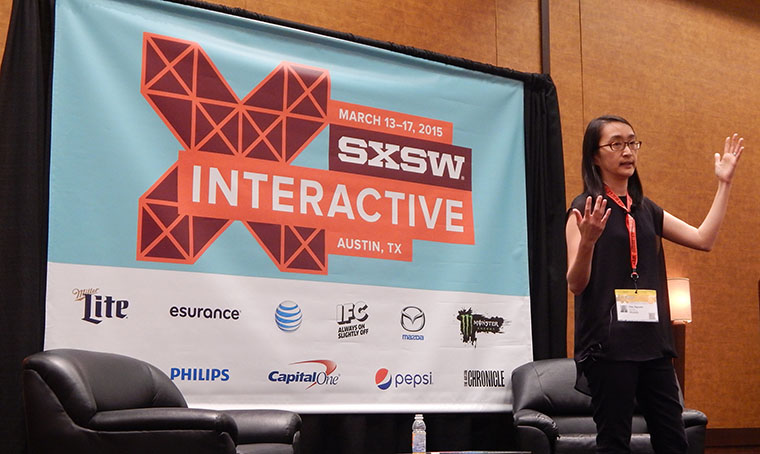
This packed session featured the publisher of BuzzFeed, Dao Nguyen. She gave examples from actual BuzzFeed content (as well as sharing their own data and research) as to why BuzzFeed creates the content they do, and how to create content that resonates with audiences, thus prompting them to share with their social network.
BuzzFeed currently has 200M monthly user visits and over 1 billion monthly video views. Nguyen said they their video division is currently the largest sector of BuzzFeed, and also talked about how they have upped their game with BuzzFeed News, which has begun being used as a source by places like the New York Times.
Why Does Content Resonate?
Nguyen said that focusing on “viral” content works so well because they aren’t trying to con the audience. She states:
“No one can actually trick you into sharing content with someone.”
She then prompted the audience to think about why people actually share content. There are 5 reasons why BuzzFeed’s content works so well:
- Content is Identity: “This post is so me.” BuzzFed writes content to be appreciated by a very small slice of the population. This is why it’s shared so much, because people feel a connection with it.
- Content is Emotion: Evoking emotion that inspires a genuine feeling in someone will highly promote them to share.
- Content is Conversation: Nguyen gave the example of #TheDress for this reason. Within 12 hours since the piece was published, at least one person in every country in the world had seen it. She speculated this was because it became a point of discussion. People were texting their friends and family about it, sharing it on their screen at bars, and more.
- Content is Aspirational: It can inspire people to be a better version of themselves.
- Content is Global: It can create a feeling that we are all united; that there are common things that unite us all. BuzzFeed translates some posts into multiple languages and has success, proving that most of us as a whole follow the same trends.
Trends and Insights
Nguyen then went into how and why they create the type of content that they do. They often base their formulas and strategy on basic epidemiology, which is the study of infectious diseases (while joking that they, and us, shouldn’t think of content as a virus). BuzzFeed uses a measurement called Social Lift, which is the multiple of traffic that you get from sharing, to track and predict a post’s overall success.
[pullquote]“We don’t promote popular content. We promote content that will be popular.”[/pullquote]
Some of the other insights Nguyen shared was that Pinterest is their 2nd largest social referrer. She said after they added a one click pin button in mobile list posts after studying user behavior from the Pinterest app, it increased list-item share rate by 10X. In addition, mobile users that share spend 80% more time on a page (both sponsored and regular content), compared to mobile users that don’t share.
She also touched on how genders share content. Nguyen stated that,
“On BuzzFeed, and in life, women share 4x as much as men.”
which made the audience chuckle. But she said that has definitely played a role in their content strategy. They will often do more content or videos slanted toward women so it gets shared more.
Overall, BuzzFeed must be doing something right. They have grown 11 times over since the end of 2012 and have begun applying the same testing they do with written content to video and apps. When it comes to describing what BuzzFeed is, Nguyen stated,
BuzzFeed isn’t a website. It’s a process– people making content, publishing it all over the internet, getting data back about what works, and then doing it over again.
Key Takeaways from Dao Nguyen:
- Social content needs both art and science
- There is no one [measuring] metric that rules them all
- The more we publish, the more we learn. The best machine learning is the human brain.
- Data and tech are only as powerful as the company will allow
- Culture is BuzzFeed’s competitive advantage
Photo taken by author.






